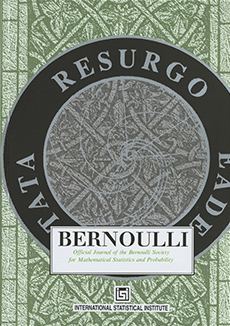Abstract
For $n\ge 0$, let $\lambda_n$ be the median of the $\Gamma(n+1,1)$ distribution. We prove that the sequence $\{\alphapha_n=\lambda_n-n\}$ decreases from $\log 2$ to $\frac{2}{3}$ as $n$ increases from 0 to $\infty$. The difference, $1-\alphapha_n$, between the mean and the median thus increases from $1-\log 2$ to $\frac{1}{3}$. This result also proves a conjecture by Chen and Rubin about the Poisson distributions: if $Y_{\mu}\sim\text{Poisson}(\mu)$, and $\lambda_n$ is the largest $\mu$ such that $P(Y_{\mu}\le n)=\frac{1}{2}$, then $\lambda_n-n$ is decreasing in $n$. The sequence $\{\alphapha_n\}$ is related to a sequence $\{\theta_n\}$, introduced by Ramanujan, which is known to be decreasing and of the form $\theta_n=\frac{1}{3}+4/(135(n+k_n))$, where $\frac{2}{21}<k_n\le\frac{8}{45}$. We also show that the sequence $\{k_n\}$ is decreasing.
Citation
Sven Erick Alm. "Monotonicity of the difference between median and mean of gamma distributions and of a related Ramanujan sequence." Bernoulli 9 (2) 351 - 371, April 2003. https://doi.org/10.3150/bj/1068128981
Information





